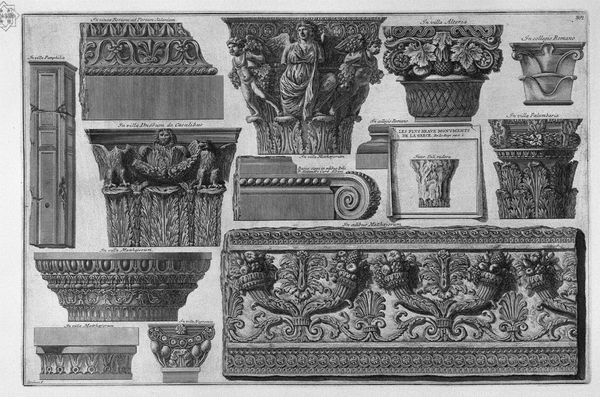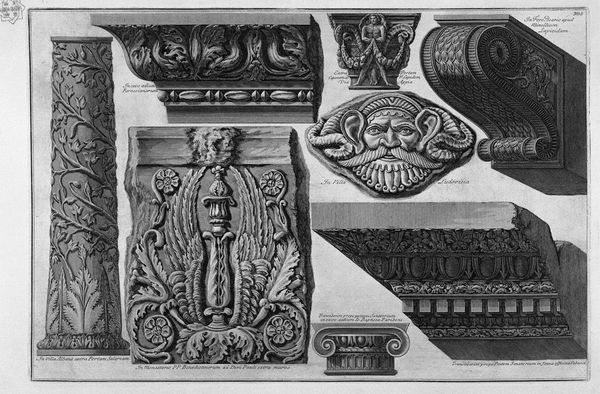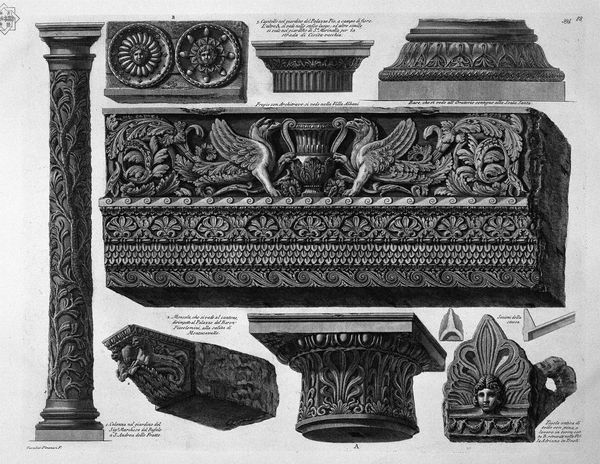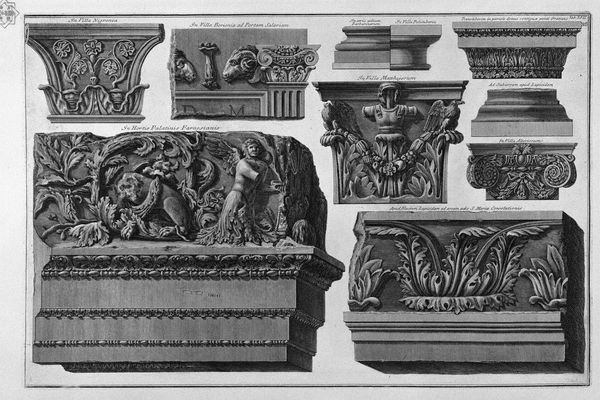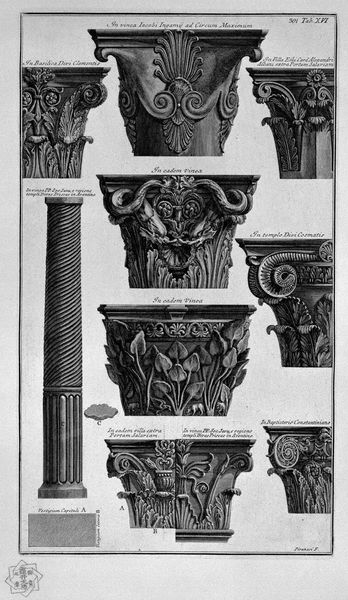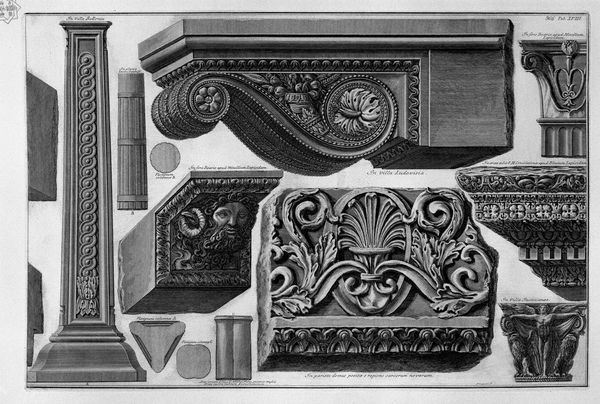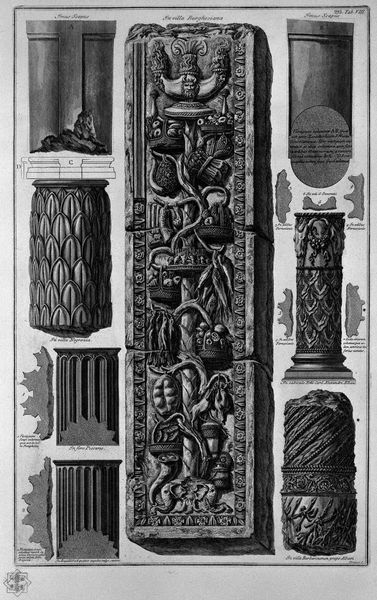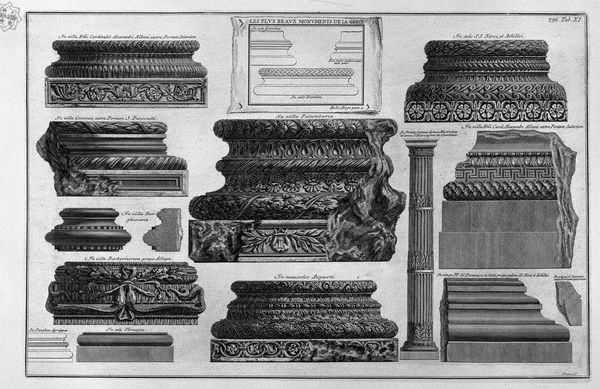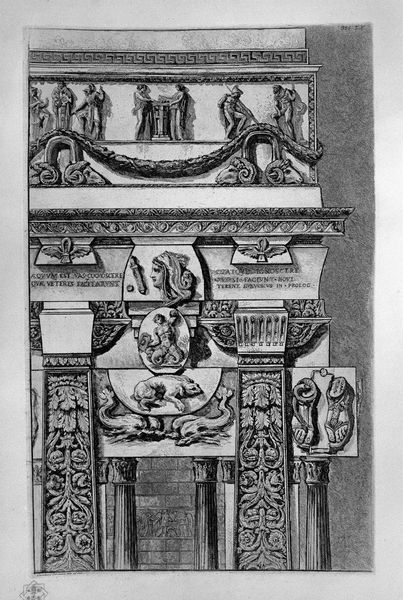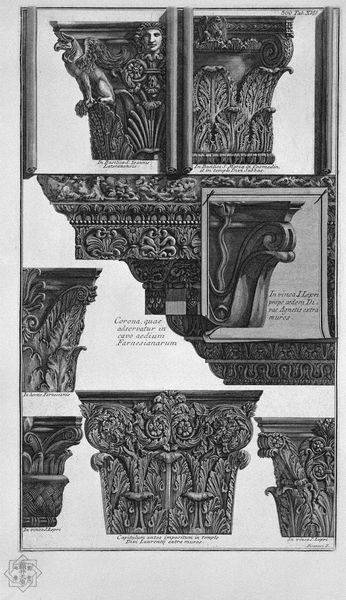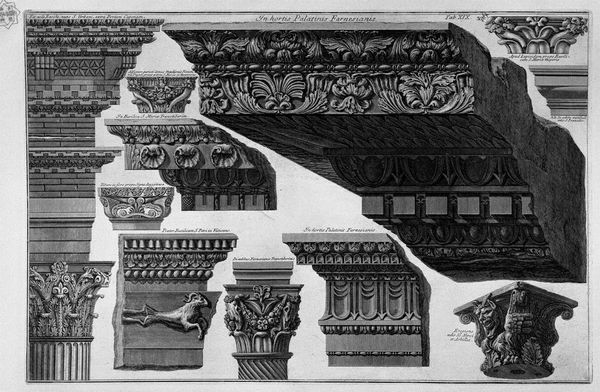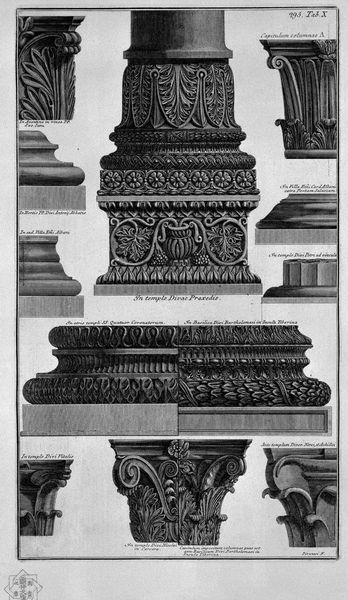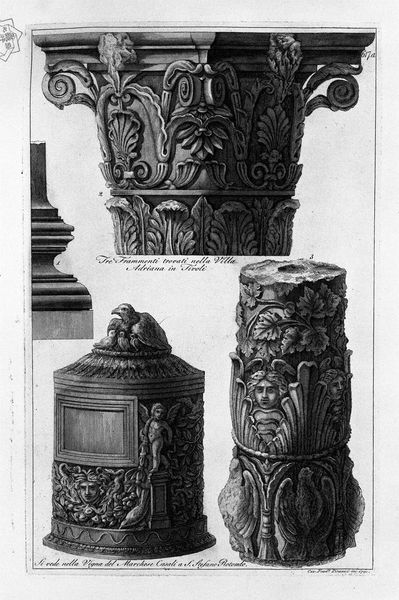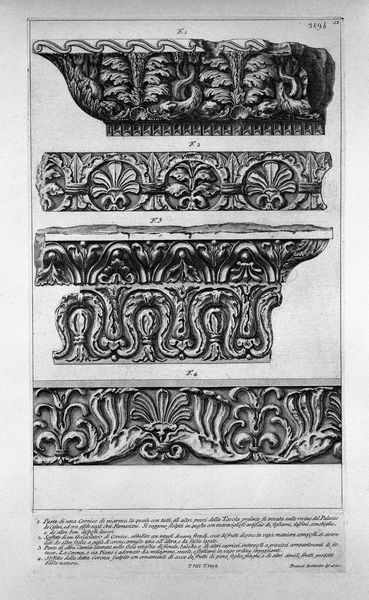
Several capitals and a bas-relief (Farnese Gardens, Villa Barberini, etc.)
0:00
0:00
drawing, carving, print, relief, engraving, architecture
#
drawing
#
natural stone pattern
#
neoclacissism
#
carving
# print
#
sculpture
#
relief
#
classical-realism
#
sculptural image
#
geometric
#
carved
#
engraving
#
architecture
Copyright: Public domain
Editor: Here we have Giovanni Battista Piranesi's "Several Capitals and a Bas-Relief (Farnese Gardens, Villa Barberini, etc.)", which is an engraving. It seems to depict different architectural fragments. What can you tell me about this print? Curator: Look closely at the lines, the precise rendering of stone, and think about what Piranesi, as a printmaker, is doing. He is mediating ancient Roman grandeur through a highly reproducible medium. These weren’t merely aesthetic choices. They represent a shift in how knowledge about antiquity was disseminated. Editor: So, you're saying that the choice of printmaking influences how this architectural detail is perceived, especially given the historical context? Curator: Precisely. Printmaking democratized access. It removed the physical barrier of the original artifact, making it available, albeit in reproduction, to a wider audience for study. Consider the labor involved – the skilled hands cutting into the plate, the mechanical process of printing, and then, the distribution of the prints. How does that compare to the original context of these architectural elements, intended for aristocratic display? Editor: It’s a massive shift in accessibility, right? The original sculptures would have been unique, commissioned for the elite, reflecting power and wealth. A print flattens that. Curator: It does. Think of the implications for art education too. A student in London or Philadelphia could study Roman architectural details without traveling to Italy, through prints like this. This accessibility, of course, raises questions about authenticity and authorship – what is lost, what is gained in translation from carved stone to engraved image? Editor: So by choosing engraving, Piranesi engaged in the discussion of making classical forms more available and democratizing knowledge. Curator: Exactly. We can see his artmaking and labor, not as a transparent window onto the past, but as an active interpretation and manipulation of materials in a specific social and economic context. This challenges traditional notions of artistic genius. Editor: That’s fascinating; I never considered the act of reproduction as part of the message of neoclassical art itself. Thanks! Curator: The beauty is how material analysis allows for a layered understanding beyond conventional art historical categories. Always ask about process, labor, and access!
Comments
No comments
Be the first to comment and join the conversation on the ultimate creative platform.
